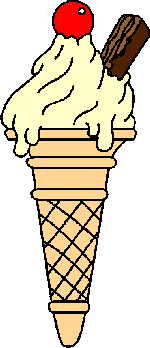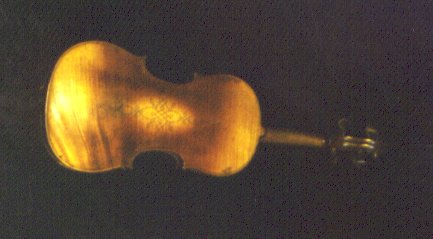Baroque Violin
Today, I want to talk about ice cream, the DC-3, and baroque violins. The University of Houston's College of Engineering presents this series about the machines that make our civilization run, and the people whose ingenuity created them.
I recently went to hear the great baroque violinist Reinhard Goebel playing music by Heinrich Biber. Painted inside the lid of the accompanying harpsichord was the oddest motto: Scientia non habet inimicum nisi ignorantiam -- Knowledge has no enemy other than ignorance -- a puzzling thought for a concert.
Baroque violins don't really differ that much from modern ones. The fine Amatis and Strads all had this form until about 1800. Then their necks were lengthened. Their gut strings were replaced with metal. Their bridges were raised. And they were played with a different bow. They were turned into the powerful modern instrument we all know. Still, it's the technology of their use that changed the most.
The real difference between the two instruments is the way they're played. The modern violin sounds forceful and declamatory in comparison with its baroque ancestor. Baroque violin playing has a gentler tone with hardly any vibrato. The complex nuances of bowing give it a sort of swelling-fading sound. It's very free-flowing and expressive.
Some new technology improves old technology. Some replaces it for other reasons. All my life I've tried to replicate the home-made ice cream my great-aunt gave me on her farm in Illinois. Everyone who makes ice cream advertises the homemade taste, but no one duplicates it. You simply can't with manufactured ice cream. Manufactured ice cream doesn't improve my great-aunt's technology. It simply replaces it with ice cream that's more generally available.
So much technology is like that. The 50-year-old DC-3 airplane wasn't improved by later airplanes. People who want small transport planes to get in and out of short landing strips and make short hops still buy DC-3s if they can get them. Today's airplanes don't often have to serve those functions; but when they do, the DC-3 is still the best.
Nobody will claim that later buildings improved on Chartres cathedral -- or that steamers improved on clipper-ships. These replacements were made for many reasons, but not always by superior technology.
That strange inscription on that harpsichord the other night! "The only enemy of knowledge is ignorance." The gentle expressive baroque violin, my great-aunt's ice cream, and the functionally perfect DC-3, all represent knowledge -- technology -- that stands up to any rational challenge. The only attack that can harm them is ignorance -- they can be forgotten.
I'm John Lienhard, at the University of Houston, where we're interested in the way inventive minds work.
(Theme music)
For more on the change from baroque to modern violins see, The New Grove Dictionary of Music and Musicians. Vol. 19, (Stanley Sadie, ed.) London: MacMillan Publishers Ltd. 1980.
This episode has been greatly revised as Episode 1591.


(clipart)

(Photo by John Lienhard)
This baroque violin reveals its age in its short neck and the unusual inlaid pattern on the back